5 Most Common Solar Lighting Problems (and How to Solve Them for Year-Round Performance in 2025)
Outdoor solar lighting has surged in popularity as cities, businesses, and homeowners embrace sustainable solutions. But if you’ve ever experienced dim lights, short run times, or lights that fail in the winter, you’re not alone.
Many off-the-shelf solar lighting products are not designed for year-round reliability—especially in colder, low-sunlight climates. The good news? These issues can be prevented with the right system design and product selection.
In this guide, we’ll walk you through the 5 most common problems with outdoor solar lighting—and show you exactly how to fix or avoid them, so your lights stay bright no matter the season.
Quick Summary Table
| Problem | Root Cause | Solution | Expected Result |
|---|---|---|---|
| 1. Winter performance issues | Insufficient sunlight, cold batteries | Use cold-weather batteries, correct sizing | Reliable lighting throughout winter |
| 2. Dim or flickering lights | Low-quality LEDs, small batteries | Tier 1 LEDs, LM-79 certification | Bright, steady illumination |
| 3. Lights don’t last all night | Small/degraded batteries, poor sizing | 3–5 days autonomy, deep-cycle batteries | Full night-time illumination |
| 4. Snow, ice, bird blockage | Flat panels, no deterrents | Tilted panels, bird spikes | Maximum solar collection, less blockage |
| 5. Poor support & no spare parts | New/low-quality brands | Experienced brands, long warranties | Long-term maintenance and parts availability |
1️⃣ Why Do Solar Lights Stop Working in Winter? (And How to Fix It)
Winter is the season when many users first notice problems with their outdoor solar lights. Shorter daylight hours, low sun angles, and colder temperatures all reduce the amount of solar energy collected and stored. In regions with snow, panels may also become blocked—cutting off energy supply entirely.
Many entry-level solar lighting systems are only designed for summer performance and fail to account for the severe reduction in sunlight during winter months.
Common issues in winter include:
- Incomplete charging during the day due to short photoperiods
- Batteries losing capacity in sub-zero temperatures
- Snow or frost blocking solar panels
- Systems not sized for local winter solar insolation
How to Solve Winter Solar Lighting Problems
✅ Select battery types built for cold weather
LiFePO4 and NiMH batteries perform better at temperatures below freezing compared to older lead-acid designs.
✅ Size your solar panel and battery storage for the worst-case scenario
This means calculating based on December sun levels, not summer, and ensuring enough storage to cover multiple overcast days.
✅ Install panels at the correct angle
Panels should be tilted to shed snow and optimize low-angle winter sunlight.
✅ Choose proven systems
Top-tier suppliers offer solar lighting that is specifically engineered to operate year-round in cold and snowy climates.
With proper system design, solar lighting works dependably even through the harshest winters—saving on energy costs while maintaining bright, safe illumination.
Image credits from How to Find the Best Orientation and Angle of Solar Panels?
2️⃣ Lights Are Too Dim or Flicker Unexpectedly
One of the most common complaints about outdoor solar lights is that they appear too dim, flicker, or fail to maintain consistent brightness throughout the night.
These problems typically arise from poor product design or inadequate quality control. Many cheaper solar lighting products overpromise light output but are built with low-grade LEDs and underpowered batteries.
Why It Happens:
- Low-quality LEDs with poor lumen efficiency
- Insufficient battery size to support desired brightness levels
- Poor system sizing that doesn’t match real-world usage
- No LM-79 testing to verify true light output (many products advertise “bare LED” specs which can be misleading)
How to Solve:
✅ Use Tier 1 LEDs with verified lumen output
Choose lighting systems that use high-efficiency LEDs from Tier 1 manufacturers—ensuring brighter performance with lower energy consumption.
✅ Require LM-79 test data
Demand documented LM-79 reports from your supplier to verify actual system light output, not just raw LED chip ratings.
✅ Ensure proper panel & battery sizing
A well-designed system must have enough solar collection and storage capacity to maintain brightness throughout the night and in varying conditions.
✅ Choose suppliers with photometric reports & transparent specs
Reliable providers offer detailed photometric layouts, showing exactly how much light you’ll get and where—before you buy.
With the right components and sizing, solar lighting can deliver bright, consistent illumination without flickering or dimming, even during challenging seasons.

3️⃣ Solar Lights Don’t Last Through the Night
It can be frustrating when your solar lights turn off halfway through the night—especially when they were fully charged earlier in the day.
If your lights aren’t lasting from dusk till dawn, this is almost always a system sizing problem or a result of battery degradation.
Why It Happens:
- Batteries sized too small for the load
- Excessive depth of discharge reducing battery lifespan
- Insufficient solar collection on cloudy days
- Inadequate system design for local night length and weather conditions
How to Solve:
✅ Design for 3–5 days of autonomy
Professional solar lighting systems are sized to operate for several days without sun, ensuring reliable performance during extended cloudy periods.
✅ Select deep-cycle batteries
Use batteries designed for solar applications—such as LiFePO4 or high-quality NiMH—which can handle deep cycling and extended use without rapid degradation.
✅ Monitor battery health
Include system monitoring to detect when battery capacity starts to fade, so replacements can be planned before performance is affected.
✅ Work with experienced designers
Partner with suppliers who accurately model worst-case solar conditions and night durations to guarantee all-night lighting—even in winter.
A properly designed system will maintain full lighting from sunset to sunrise, delivering the safety, security, and visual appeal you expect from solar lighting.
4️⃣ Snow, Ice, or Birds Block Panels
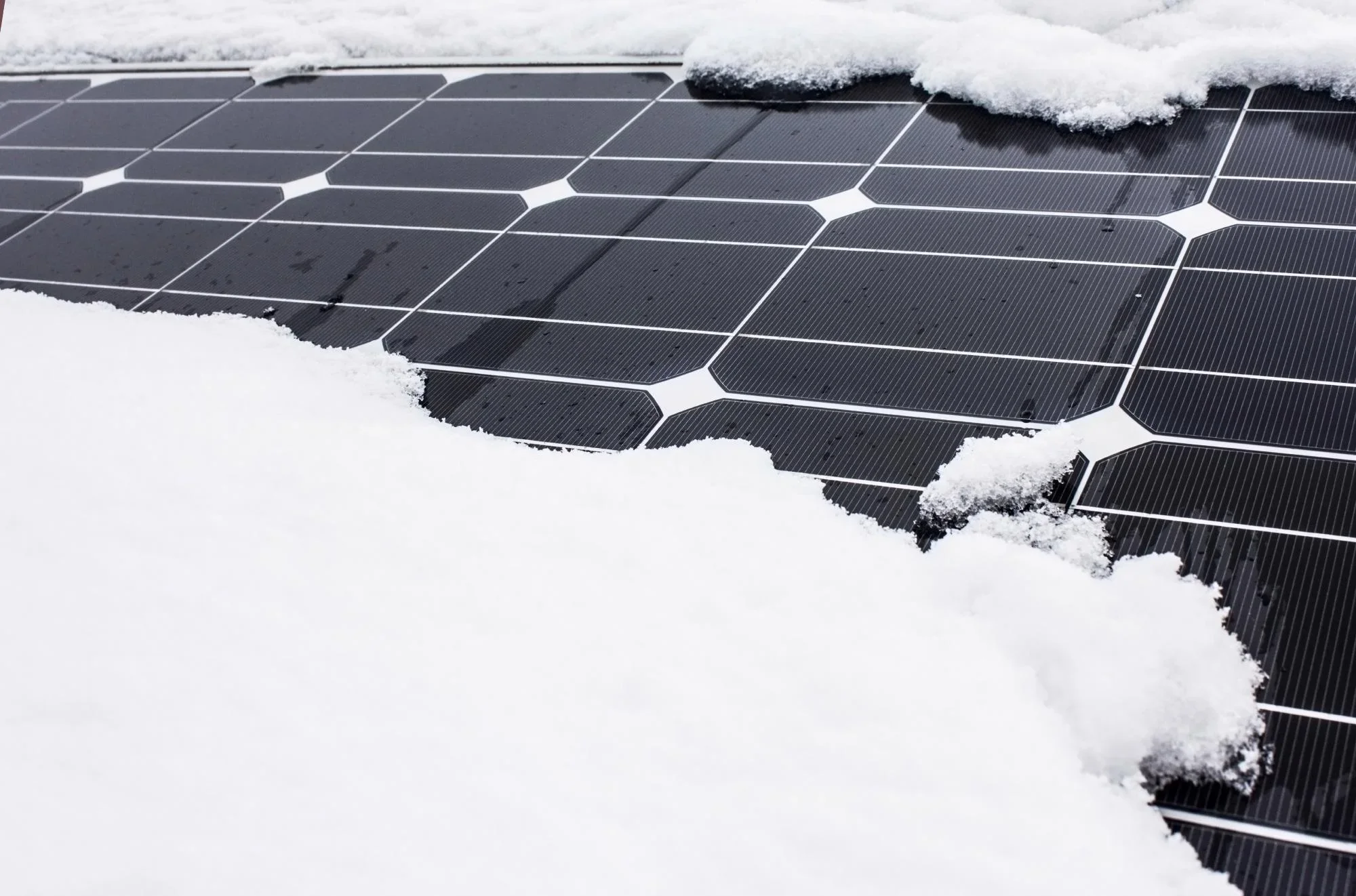
Image credits from The Impact of Snow on Solar Panels: What You Need to Know
Even the best solar lighting system can underperform if the solar panels are blocked by snow, ice, or nesting birds. This reduces or completely stops the charging process, leading to lights that fail at night.
In regions with cold climates or active bird populations, this is a common but often overlooked issue.
Why It Happens:
- Flat panel mounting allows snow accumulation
- No panel tilt to shed water, frost, or debris
- Lack of deterrents leads to birds nesting on panels
- No maintenance plan for seasonal conditions
How to Solve:
✅ Install panels at a 30–45° tilt
Angled panels naturally shed snow and water, improving energy capture in winter and minimizing blockages.
✅ Use anti-bird spikes when needed
Install deterrents to prevent birds from nesting on solar panels and reducing long-term performance.
✅ Choose systems designed for cold climates
Select products with proven success in regions with snow and frost, ensuring they can maintain performance year-round.
✅ Implement routine seasonal maintenance
Where needed, schedule quick inspections during winter to clear panels and maximize system efficiency.
By addressing environmental factors like snow and birds, you can keep your solar panels clean and operational—ensuring reliable lighting no matter the season.
5️⃣ Poor After-Sales Support & No Spare Parts
One of the biggest frustrations for solar lighting buyers is when something goes wrong—only to find that the manufacturer is no longer around or replacement parts are unavailable.
This problem is especially common with low-cost brands or new market entrants who lack long-term experience and infrastructure. Without strong after-sales support, even minor issues can lead to total system failure.
Why It Happens:
- New or low-quality brands disappear after a few years
- Proprietary designs with no interchangeable parts
- No commitment to long-term parts availability
- Limited or unclear warranty coverage
How to Solve:
✅ Choose brands with >10 years of industry experience
Established companies are far more likely to honor warranties and provide long-term parts support.
✅ Look for 5–10 year warranty coverage
Strong warranties on both system components and batteries give peace of mind for long-term operation.
✅ Confirm availability of retrofit kits and spare parts
Reputable suppliers provide upgrade paths and stock essential parts, helping to extend system life.
✅ Work with trusted providers, not opportunistic resellers
Partner with manufacturers and distributors known for their commitment to product support—not those chasing trends.
By choosing a reliable solar lighting provider, you can ensure that your investment delivers value and performance for many years to come.
Frequently Asked Questions (FAQ)
How long do solar lights typically last?
High-quality solar lighting systems typically last 5–10 years, depending on battery type, LED quality, and system maintenance. Premium systems using LiFePO4 batteries can often exceed 10 years with proper care.
How can I make solar lights work in winter?
To ensure reliable performance in winter:
- Use cold-resistant batteries
- Size the solar panel and battery storage for winter sunlight
- Tilt panels to shed snow
- Choose products proven in cold climates
What type of battery is best for solar lights?
For year-round outdoor solar lighting, LiFePO4 (lithium iron phosphate) or high-quality NiMH batteries are the best choices, offering long cycle life and better cold-weather performance.
How do I prevent birds from nesting on solar panels?
Use tilted panel designs (30–45°) to discourage nesting and install anti-bird spikes in areas with heavy bird activity.
How do I size solar lighting for my location?
A professional supplier will analyze your site’s solar insolation data, weather patterns, and night length to ensure the system can perform reliably—even during the darkest winter days.
Final Thoughts
Outdoor solar lighting offers an eco-friendly, cost-saving way to illuminate streets, pathways, and public spaces—but only if the system is well-designed and properly sized.
By understanding the most common problems—such as winter performance issues, dim lights, battery failures, snow accumulation, and poor support—you can make informed decisions that will help you choose the right solution.
Investing in high-quality components and working with an experienced solar lighting provider ensures your system will perform year-round, delivering bright, reliable illumination for years to come.
If you’d like expert guidance on selecting and sizing the right solar lighting system for your project, contact us today—our team is happy to help!




